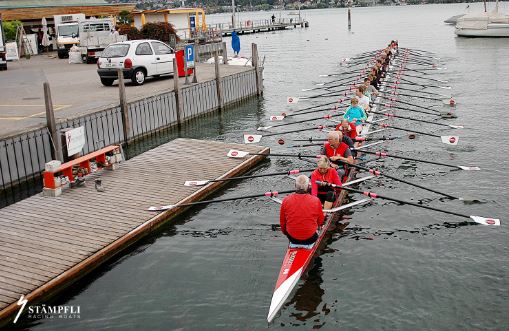
Selecting which rowers to put in a crew is a difficult and stressful task. Choosing which cox to put in the crew is often more difficult.
With rowers, a coach has access to large amounts of more or less objective data. There are a series of maximum ergometer test scores backed up by lots of sub-max data from the same source. There are seat racing results, size and weight measurements. And, if it does get to be subjective we are all used to looking at rowers in a boat and saying “This one rows better than that one”.
Coxswains are a different case altogether. There is not even agreement on what the coxswain’s primary job is. Are they a mobile cheerleader and tactical boss or are they there to sit still and steer?
Does size matter?
And then comes the weight issue. We all (or at least most of us) believe that lighter coxswains make for faster crews. But how much faster? My traditional calculation went like this: What happens when you add a coxswain to a 4-? It gets 50kg heavier and 10secs slower over 2km. So; 5kg of deadweight makes a four a second slower over 2km. To my pleasure the highly technical Physics of Rowing run by Anu Dudhia comes up with nearly the same answer.
So you can get a number on the weight issue but if your coxswain is overweight getting an often young person to lose weight is a tricky area. It is certainly not recommended that junior coxswains be encouraged to diet.
My first area of concern when choosing coxswains is steering. Can they steer straight down the course? Do they stay in the middle of the lane? Or, if you are facing a head race, can they steer the corners well?
It isn’t possible to easily measure the braking effect of the rudder but from experience I am sure that it can easily cost many seconds over a course, especially if the added disruption of the disturbance to the balance is added in.

When it comes to race calling many coxswains believe they can add much to a boat – the carefully thought out appeal or comment to help a rower dig deep and perform at a higher level. I am not convinced. Some of the greatest and hardest races I have seen, and that I took part in, were in coxless boats.
Did Mahé Drysdale need a coxswain to tell him to go hard at Beijing? There is certainly a role for the coxswain of an eight in communicating, and in coordinating the efforts of 8 tired athletes if the rowers need outside help to push themselves then their mental skills are not as good as they should be.
So I have a list of skills and attributes that I want a cox to have: Can steer well, is not much over the minimum weight, can run a race plan and is good at communicating. That is the order of importance for me.








